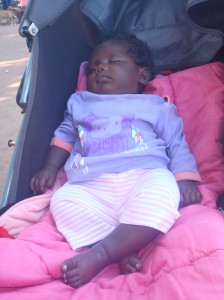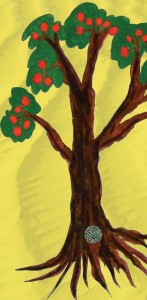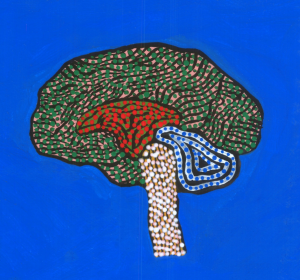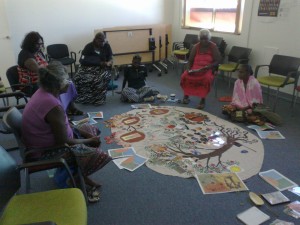‘Healing Our Children’ is the first major project that Lucy co-founded in 2014 after four years working as a Children’s Counsellor on the Tiwi Islands. The following was a project proposal submitted by Lucy and was eventually funded by The Indigenous Advancement Strategy under the Department of Prime Minister and Cabinet. Lucy co-ordinated the initial trial of this project in 2015-2017 and presented her work at the SNAICC Conference in 2017 (watch a video of this presentation). An independent evaluation report can be downloaded here. It was subsequently refunded in 2018.
‘Healing Our Children’ project proposal
Watch a 5 minute snapshot of how this project evolved and what needs to happen next.
Introduction

Key Target Group: Mothers of children aged 0-3 yrs
The proposed project aims to prevent the long term effects of trauma in Aboriginal children including problematic behaviour, learning and memory problems and mental health issues suffered as a result of exposure to traumatic events including domestic and family violence. We will build the capacity of strong Aboriginal women to respond to the needs of vulnerable mothers and children experiencing violence and abuse. Local women will be training, mentored and supported to facilitate educational support groups with pregnant women and mothers to engage them in safe conversations about the impact of violence, abuse and neglect on children’s brain development. Using our culturally sensitive storytelling tool kit and resources, we will empower women with this knowledge and increase protective behaviours towards their children, aiming to prevent long term irreversible neurobiological harm and increase resilience. The project will provide train-the-trainer style workshops for Aboriginal workers and follow up with on-the-job mentoring with clients groups.
Evolution of the Project

The tree metaphor is used to talk about growing strong children with a healthy brain
RANT has provided children’s counselling services to the Tiwi Islands since 2009. During this time, Lucy Van Sambeek noticed that mothers had difficulty understanding that the problem behaviours their children experienced were related to the traumatic events occurring in their lives. Women were also feeling overwhelmed trying to cope with their own trauma. Elders and strong women approached Lucy about their concerns for their grandchildren and parents lack of understanding about the impacts of violence on child development. Elders and strong women advocated for a culturally sensitive program and resource kit to be developed where they and women in other communities could facilitate the education of their own people. Inspired by the ‘Tree of Life’ program and it’s success with Tiwi children in groupwork (Denborough, 2008), Lucy Van Sambeek began to talk to the women about creating their own resources using Tiwi specific metaphors; those that would have particular meaning for the Tiwi Aboriginal community.
From this beginning the storytelling tool kit called ‘It Takes a Forest to Raise A Tree: Healing Our Children from the Storms in Their Lives’ was co-developed in 2012-13. More than 40 Aboriginal women, Tiwi workers and non-Aboriginal workers from Wurrumiyanga, Pirlangimpi, Milikapiti, Yirrkala, Nhulunbuy and Ski Beach were consulted to co-develop and draft the resources. Elders and other strong women have been integral to the design and development of the tool kit including facilitating small trials of each resource, script development, developing images and concepts and art work. 10 local community members from Milikapiti also volunteered their time to act in the film'”One Family Tree’. Download more information about It_Takes_a_Forest_talking_tool here.
The Need for this Project
The NT Children’s Commissioner, Howard Bath, recently noted that in the NT, there are 82 Indigenous women hospitalised for assault for every one non-Indigenous woman. The largest and increasing proportion of child abuse notifications are Aboriginal children (5930 notifications in 2011-12) compared to non-Aboriginal children (1972 notifications). Most of these are aged 0-4 (Bath 2012).
We can extrapolate from this data that there are large numbers of Aboriginal children witnessing domestic and family violence in the critical sensory periods of the child’s brain development between 0-3 years.
Evidence Base
In recent years, there has been a surge in scientific evidence from rigorous research demonstrating the effects of abuse and neglect on the developing brain, especially in utero and young children up to the age of three. Bruce Perry, one of the world’s leading experts in neuroscience and trauma has demonstrated in extensive research that “Children who have significant developmental trauma there will be high likelihood of poor organisation and functioning in lower parts of the brain….one of the best-known effects of trauma is to alter the functioning of the brain’s stress-response systems.” (in Mackinnon, 2012, p215).

The brain is the ‘seed of life’ needed to grow a strong and healthy body.
The early childhood years are the time the brain lays down neural pathways protecting them from developing long term behavioural, learning, memory, relationship and emotional problems. ‘The longer a child lived in an abusive or neglectful environment, the harder it will be to convince the child’s brain that the world can change’ (Child Welfare Information Gateway, 2010). This knowledge has huge potential in informing evidence-based practice for the prevention and treatment of child abuse and neglect.
There has been little work done in Indigenous communities educating people about the impact of violence, abuse and neglect on the developing brain. ‘It Take a Forest to Raise a Tree: Healing Our Children from the Storms in Their Lives’ is strongly influenced by the neurobiological approach to trauma. This program will primarily target vulnerable Aboriginal women who are pregnant or have young children between 0-3 years, who are potentially at risk of child abuse or neglect particularly witnessing domestic and family violence. Children aged 4-18 years who have been exposed to such trauma will also benefit from the project through our support of their mothers and carers.
Expected Outcomes
Build capacity and competence in the role of group facilitators for a number of Aboriginal Tiwi Islander Women
- Increasing the knowledge of Aboriginal women (young women and mothers) about the impact of violence, neglect and abuse on children’s brain development

Tiwi and Yolngu women working with the trial resources.
- Reducing the risks of Aboriginal children particularly in utero and under 3 years of age being exposed to domestic and family violence and other traumatic events
- Preventing the long term effects of trauma including mental health issues and problematic behaviour, learning and memory problems that can surface later in children’s and adults lives
- Increasing the safety of all children
- Removing the self-blame and shame children and women experience when they are exposed to violence
- Building the capacity of strong Aboriginal women in communities to respond to the needs of vulnerable women and children experiencing violence and abuse
- Increasing the take up of counselling and family support services by at-risk women and children.
Supporters of this project
“The Healing Our Children project proposes a therapeutic, targeted response to children exposed to violence and trauma in order to promote better outcomes for these children and their families for their futures. In my opinion, the regular exposure of children to violence and other traumatic experiences, and the lack of understanding and recognition that the community has about the long term effects that this can have on the child’s development and future health, is one of the most concerning issues facing the future of the community.” – Amy Fogarty, Community Child Safety and Wellbeing Practitioner, Dept of Children and Families, Wurrumiyanga
“The interactive, visual and storytelling elements of the project can speak to women in a way that verbal language alone cannot. Empowering strong women in the community by providing them with tools such as this is so important.” – Marisa Taylor, CatholicCare NT, Wurrumiyanga
“…there is a clear need for an early intervention project of the kind proposed, which focuses on prevention of trauma resulting from domestic violence.” – Assoc. Prof. Gary Robinson, Co-Director, The Centre for Child Development and Education, Menzies School of Health Research
“This service is DESPERATELY needed here. Each year I am struggling more and more with the increased number of tragic tales of the fallout from fractured, dysfunctional families. The wounded children require so much more of my time.” – Anita Pacey, Educational Leader, Pwakayini Preschool, Wurrumiyanga
More information
Please contact Lucy Van Sambeek at lucy@metaphoricallyspeaking.com.au.
References
Bath, Howard. (2012) Children’s Commissioner for the NT, 2012, Indigenous Service Delivery in Response to the Evidence, FRSA Conference Darwin, 13-15 November 2012
Child Welfare Information Gateway, Understanding the Effects of Maltreatment on Brain Development at www.childwelfare.gov
Denborough, David (2008) The Tree of Life; Responding to Vulnerable Children, Collective Narrative Practice, Dulwich Centre Pubs.
Havnen, O. (2012) Office of the Northern Territory Coordinator-General for Remote Services Report, June 2011 to August 2012
Mackinnon, Laurie, (2012)The Neurosequential Model of Therapeutics: An Interview with Bruce Perry in The Australian and New Zealand Journal of Family Therapy, V33, No 3, pp210-218.
Richards, Kelly. (2011) Children’s Exposure to Domestic Violence. Trends and Issues in Crime and Criminal Justice, No 419, Aust. Inst of Criminology. Pp 401 -420.
